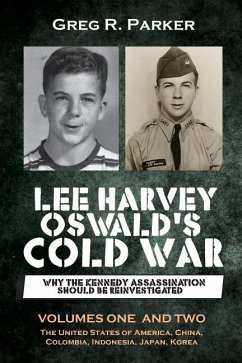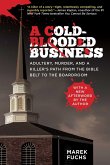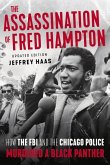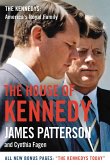Volume One takes the reader from the Barrios of Bogotá through the intrigues of Manchuria and war-torn South-East Asia to the slums and skyscrapers of New York City, the latter as seen through the eyes of the truant, Lee Harvey Oswald. Within a year of formation in 1947, the CIA committed what was probably its first major act. It involved an assassination using a designated patsy. Time and place: Bogotá, April 9, 1948 - the victim, the youthful and charismatic presidential front-runner, Jorge Eliécer Gaitán. The entire scenario would be replicated 20 years later in Los Angeles with another youthful and charismatic presidential front-runner - right down to a patsy using self-hypnosis and connected to the California cult known as AMORC. And somewhere in between the two slayings was the assassination of JFK and the circuitous path to Dallas taken by patsy-in-the-making, Lee Harvey Oswald - the most intriguingly enigmatic alleged assassin of them all. Volume Two picks up where Volume One left off. Marguerite and young Lee have left New York City and returned to Lee's place of birth, New Orleans. Lee seems more like a "normal" kid than ever before. He gets into scrapes at school, joins clubs and keeps a weather eye on the wide world around him. But dig deeper and he is immersed in memorizing the Marines Manual and Das Kapital under the guidance of Captain Dave whom Lee has met in the Civil Air Patrol (CAP). Moreover, he is playing entrapment games with his friends. Has Captain Dave (David Ferrie) recruited Lee into a cadre of teenage anti-subversive agents in a program first floated by the CAP some seven years earlier? Was this program, which included teaching young recruits how to speak Russian, the seeds of what became the False Defector Program? In 1956, Lee is once again uprooted - this time moving to Forth Worth where he gets caught up in the riots brought about by forced integration pursuant to the Brown v Board of Education decision. Meanwhile, the Hungarian Uprising is waiting to explode in Europe. Also in 1956, Ruth Paine's sister, Sylvia Hoke finished work on a CIA project. The nature of the project is revealed here for the first time. Then in October, on his 17th birthday, Lee joins the Marines. We review his service record and explain some of the anomalies within it. Lastly, we have a look at the very spooky Albert Schweitzer College in Switzerland, which Lee had paid a $25 deposit to attend, but instead had headed to the Soviet Union. The Nazi and doomsday cult connections to the college are exposed, as are US government ties. This edition includes a bonus timeline at Appendix A.
Hinweis: Dieser Artikel kann nur an eine deutsche Lieferadresse ausgeliefert werden.
Hinweis: Dieser Artikel kann nur an eine deutsche Lieferadresse ausgeliefert werden.








